Question: This is a quilt top that I started at the workshop last year that Marci taught for Quilter’s Anonymous Guild. I am a new quilter. Any suggestions on how to quilt it? I don’t want to use the method in the book because some of the fabric stretched so things aren’t straight. Can I go around the inside of each small triangle? How far in would I do it? – Margaret
Answer: Hi Margaret, what a gorgeous quilt! I love the circular design that you did with it. For hand quilting, inside each triangle at ¼” would be fine, giving it a traditional feel. However this has such a modern look that I would recommend something else. Also, for machine quilting, we want the fewest start and stop points possible to minimize places where threads might come undone.
We also need to consider the type of batting and how closely it needs to be quilted. I use several different types of batting but most of them can handle a space of about 4-5” or more that is not quilted. As a new quilter, choosing a batting that does not need a lot will make your project easier.
Because this design is so geometric, I would normally keep the design with straight lines. Though I think in this case, I will try some curves too, just to see if it works to repeat the circular layout element.
I would not consider in-the-ditch stitching (that follows the seam lines exactly) because that is very tedious (to me it is the hardest quilting to do) and when it is not done well, it really shows up as an issue. Also, if it is done well, you won’t see it at all. Why spend all of that effort and not have it show?
Your design will cross multiple colors and various values, so I would pick a thread color that is medium overall and is a color you would like to accent. I think either purple or gold (more orange than brown) would be nice. To try out a thread, lay a single strand across the fabrics to get an idea of how it will stand out. And since you are newer with machine quilting, use a thinner thread, 60 wt. so it does not stand out as much. These designs can also be hand-quilted with 40 wt. thread.
Now let’s look at the design possibilities. I usually place tracing paper over a photo of the quilt and draw different designs. For these I used the computer to make it look like that. Use the idea as is or make them be a spring board for your own ideas.
The diagonal stair-step lines in the first and third designs are great for a beginner to use a walking foot. There will be a lot of turning and it will take time, but the walking foot will give you more control. With experience all of these designs are easily done with a darning foot where the quilt is moved around, rather than pivoting and twisting.
For hand quilting, I would mark the circles. For machine quilting, I recommend not marking any of the lines, even for a beginner. Rather aim for the point you want going into the machine. Get to that point, pause with needle down if possible, then change direction and head for the next point. Here are close-ups showing the points.
One thing to remember: Do not stress over uneven lines or missed points. When you are quilting, you see every detail up close and know where the mistakes are. When you finish, your work will have an overall look and that is what viewers see. With practice, comes perfection – or for me, close enough to my expectations for the purpose of the project.
I hope this gives you some inspiration for adding the quilting design element to your quilt. Thank you for sharing your question. We would love to see what you choose. We won’t hold you to any deadline because the idea is to….
…enjoy your quilting!
Marci


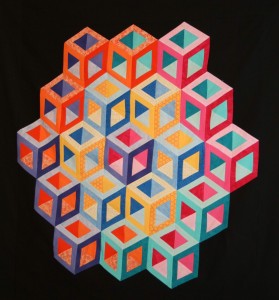
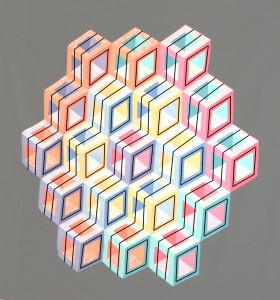
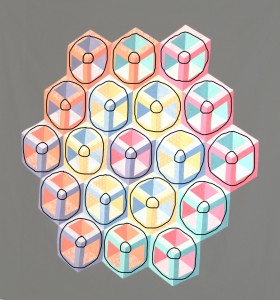
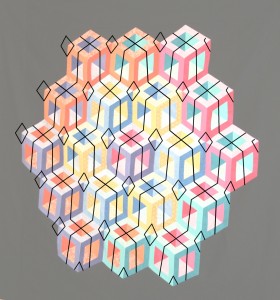
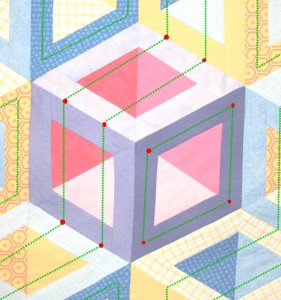
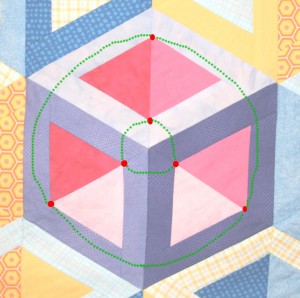
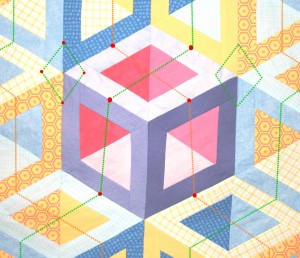
Leave a Reply
You must be logged in to post a comment.